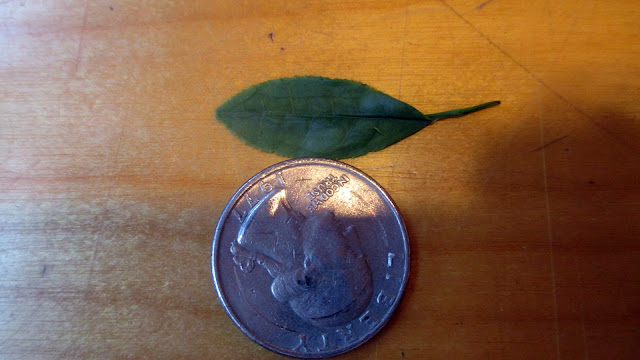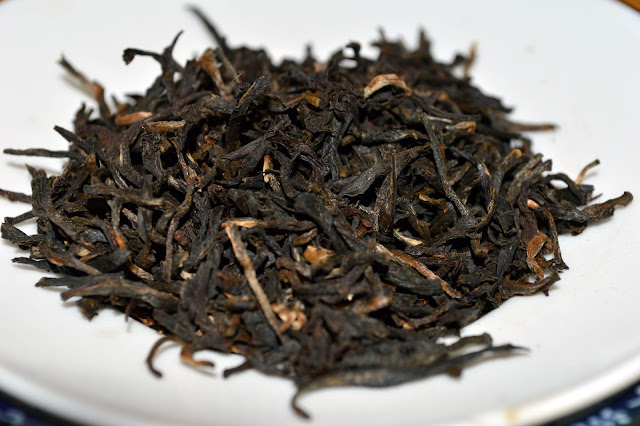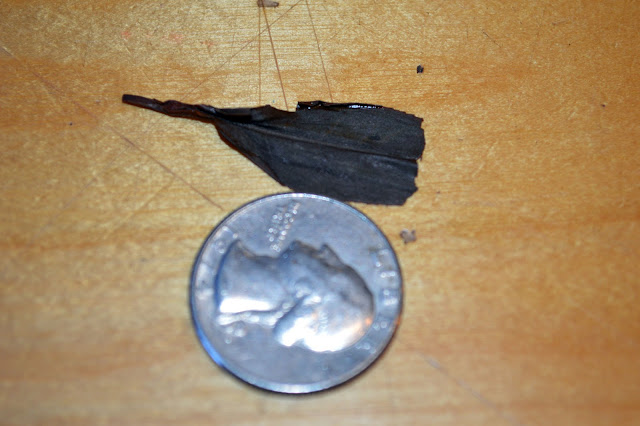In the last post I noted my disappointment in finishing off the last of the Alishan High Mountain Oolong from the 2014 Winter harvest. As I predicted there, the remaining Alishan was gone by the following day. However, I assured anyone reading it that I had some Long Feng Xia to put out and share. Perhaps one of the best High Mountain oolongs coming out of Taiwan at the moment, a quality Long Feng Xia is a pleasure to drink and enjoy. As with the Alishan, it is a "green" or "jade" oolong - slightly oxidized, primarily unroasted, light in the cup but full of aroma, subtle flavors, and delicious tea oils. The 2015 winter harvest just took place, and this year's batch is quite good, and well worth the price.
 |
| It took me a bit, but I found "Dragon or Phoenix Gorge" on Google Maps and zoomed in via the Earth overlay. As you can see, there are lots of tea farms right in the area, all of which fall under the label Long Feng Xia. |
High Mountain oolongs should exhibit a high pluck standard, such as in the picture above. The batch I ordered for the shop is from the Qing Xin varietal, which is an "indigenous" varietal. By that I mean it is one of the original ones to come over from Fujian, China sometime during the late 1800s, versus the newer varietals created by TRES in the 1980s, such as Jin Xuan or Tsui Yu. As this oolong is unroasted and only lightly oxidized, it readily gives up its qualities to the water it is steeped in, as exhibited by the measurements I got:
Water
Temp - 150
PH - 7.3
TDS - 79ppm
Brewed Tea
Temp - 148
PH - 6.27
TDS - 449ppm
Difference
PH - 1.03
TDS - 370ppm
The name of this post is "Two Different Oolongs, Similar Backgrounds." I titled it that because the other oolong, which I had a few days ago, is called Jin Chuen. It is from Fujian, China. What could be similar about these two oolongs other than that they are both oolongs? Well, it turns out that Jin Chuen is Jin Xuan! So, here is an example of an oolong varietal developed by TRES in 1980 and labeled TRES #12, Golden Daylily, or Jin Xuan, which was taken back to Fujian, China and grown there. The similarities stop there, as the Jin Chuen tastes nothing like Jin Xuan oolongs coming out of Taiwan at the moment. Rather it is lightly roasted in the traditional Chinese method, imparting a bit more earth, muting the floral notes, and presenting the drinker with a flavor profile that clearly carries an "old world" sensation. Not the most popular among contemporary US oolong drinkers for this very reason, I found the Jin Chuen to have it's own enjoyable qualities, taking me on a journey to ancient farms, ancient soil, and ancient techniques. I found it to respond best to a few longer steepings instead of my usual multiple, quick steepings.
 |
| The pluck standard is not the same in China as it is in Taiwan, so the leaves were primarily single leaves with either no stem or a single stem. |
The readings I got were:
Water
Temp - 150
PH - 7.30
TDS - 80ppm
Brewed Tea
Temp - 152
PH - 6.12
TDS - 414ppm
Difference
PH - 1.18
TDS - 334ppm































